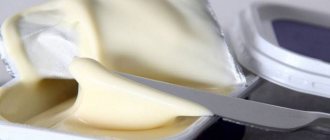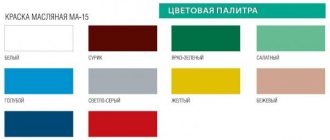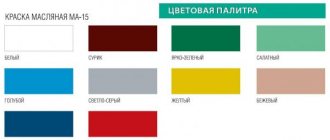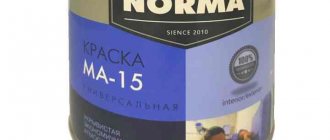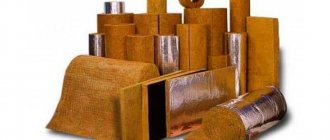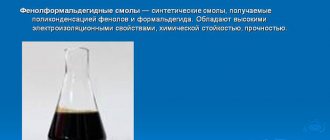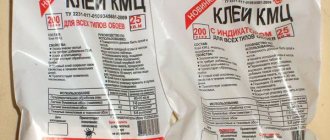- Preparation of orthophosphoric acid Method based on the use of high temperatures
- Production of a mixture under the influence of inorganic acids
- Purification and concentration
- Application in medicine
Orthophosphoric acid belongs to the category of medium strength inorganic type, the combination formula is H3PO4.
At standard temperature and pressure conditions, the reagent appears as very small, colorless, odorless crystals. At average air temperatures, the dehydrate appears as micro-sized diamond-shaped crystals. The second name of the product is phosphoric acid, which looks like an 85% transparent, odorless liquid. The crystals completely decompose when mixed with solvents. Dissociation equation H3PO4 = 3H(+) + PO4(3-). The dehydrate consists of three atoms, so decomposition takes three stages. The molar mass of the chemical combination is 98 grams per 1 mole. The molecular weight is equal to the value of 98.
Phosphoric acid has the following main characteristics:
- when mixed with chemical indicators, the color of the product changes to red;
- at high temperatures forms a pyrophosphorus combination;
- Crystals disintegrate in water in three standard stages;
- when combined with strong derivatives, it forms polyhedral salts;
- when combined with silver, the substance produces a slight yellow precipitate.
Preparation of orthophosphoric acid
Science first learned about orthophosphoric acid from the scientist Boyle, who discovered the formula during chemical experiments. The basis for squeezing the substance is phosphorus oxide. Robert took special laboratory instruments, phosphorus and nitrogen reagents for his work. The separation of matter consists of the oxidation of the base. There are several methods for isolating phosphoric acid in production:
Method based on the use of high temperatures
The technique is based on heat treatment until the released oxide reacts with an aqueous solution.
Technological generation is different, but the result is one matter. The first type is based on the joint interaction of both reagents in one container. Phosphorus is fed into the vessel under high pressure, which decomposes under the influence of high temperatures. The substance is multifunctional: it oxidizes the oxide, protects the surface of the container from fire, and removes some of the heat from the reaction. The column used is made of steel that can withstand the negative effects of phosphoric acid at temperatures up to 100 degrees. The mixture obtained in this way contains practically no phosphorus, but does contain a small amount of arsenic. The liquid is purified with special chemicals, followed by filtration.
The second technique is based on the separate processing of reagent components. For the decomposition procedure, the first chamber is used, and the second vessel is used to saturate the mass. The containers used are highly protected from the negative effects of dehydration, which allows you to maintain the integrity of the walls and increase the service life of the item.
Production of a mixture under the influence of inorganic acids
Since the 80s, scientists have been extracting phosphorus compounds based on sulfur, which reacts with phosphites.
The method has gained great popularity in agriculture due to the demand for fertilizers to saturate the soil with nutrients. The described method is the main type of chemical release due to minimal energy consumption. Scientists use two methods of isolating the formula separately or combining techniques for an effective result. The standard method of producing the chemical is based on the principle of pressing the substance at low temperatures, which eliminates the risk of corrosion. The described method is suitable for processing raw materials in large volumes. The preliminary stage is crushing the mass into small particles. Then phosphate and separately sulfuric acid enter the reactor. The temperature is maintained at an optimal value of 80 degrees. Due to the preliminary crushing of the raw materials and concentration of the resulting mixture, the time of dehydrate release increases. The advantage of the second stage used to isolate the combination is that there is no concentration step involved. The processing process is carried out at an optimal temperature of 100 degrees. The degree of concentration reaches 48%.
The combination of the two processes was invented by Japanese scientists. The technique makes it possible to extract gypsum, which is in short supply in the country due to the lack of natural deposits of raw materials.
Purification and concentration
This technology allows you to concentrate the resulting mass and purify it from additional impurities harmful to health. Concentration is carried out by vacuum type evaporation. Some plants use the technique of 2 or more evaporators, used in a certain sequence. At the legislative level of the Russian Federation, an official ban on the release of fluorine into the air has been approved, so the remainder from the technological process is recycled.
How does it work
The process is simple. You buy a converter; it usually comes in spray cans. Next, it is sprayed onto the site of the outbreak, then it is advisable for us to leave this place for about half an hour - an hour.
The product does not remove rust at all, if I may put it roughly, it freezes it and prevents it from spreading further. An iron phosphate film forms on the affected surface, which is a protective element. The work period is approximately one to two years, then it is advisable to repeat the procedure.
Read also: How to make a dog trap -
I would like to note from personal experience that my uncle is a minibus taxi driver and works on his minibus almost every season before winter. And you know, it really rots less when compared with untreated neighboring cars along the route.
But we are wondering whether it is possible to produce it with our own hands, what is the approximate composition. I’ll say right away that there are two compositions, the one that is used in production, and the one that is made at home.
Safety rules when working with phosphoric acid
When interacting with orthophosphoric acid, you should follow the recommendations of specialists in order to ensure safety for human health and the environment.
It is important to exclude direct interaction with the respiratory system, vision, and skin. Rules for using phosphoric acid:
- when processing liquid indoors, there must be a good level of ventilation;
- to protect the skin, respiratory organs, and vision, it is necessary to use: rubber gloves, respiratory masks (respirators) and safety glasses;
- open areas of the skin must be covered, which will avoid burns if the product comes into contact with a person;
- If the product comes into contact with the skin, rinse the burned area with clean water, apply a loose gauze bandage and seek medical advice from a hospital.
Chemical properties
The inorganic compound is considered tribasic and of medium strength. The following chemical properties of orthophosphoric acid are characteristic:
- reacts to indicators by changing color to red;
- when heated, it is converted to pyrophosphoric acid;
- in aqueous solutions undergoes three-stage dissociation;
- when reacting with strong acids, it forms phosphoryls - complex salts;
- forms a yellow precipitate when interacting with silver nitrate;
- thermally decomposes to diphosphoric acid;
- upon contact with bases, amorphous hydroxides, it forms water and salt.
Rules for storing and transporting orthophosphoric acid
To store orthophosphoric acid, it is recommended to use vessels made of glass, polymer or steel that are resistant to rust.
The place where the bottle will be placed should be protected from direct sunlight. The room must be dry to prevent condensation. It is recommended to maintain room temperature storage, avoiding sudden changes in values. The shelf life of the contents of the bottle, provided all recommendations are followed, is 12 months. Phosphoric acid is transported in vehicles equipped with metal containers. The properties of the tank do not change when exposed to chemical components. Phosphoric acid can be transported by water transport, taking into account compliance with safety recommendations, in tightly closed barrels. Hydroxide is classified as a hazardous substance, therefore, when transporting cargo over long distances, it is necessary to prepare accompanying documentation.
When is it necessary to adjust the pH value of a nutrient solution?
In hydroponics, pH adjustment is usually done in three cases:
Read also: Pattern of trousers for girls KB010819
1) when preparing a nutrient solution of normal concentration for direct use (which in English is called the final solution
);
2) when preparing a nutrient solution concentrate for long-term storage (which in English is called stock solution
); 3) when the acidity of the nutrient solution poured into the container changes significantly over time (for example, by 0.5 or 1 pH unit or more per day).
Harm to the body
Officially, phosphoric acid is recognized as completely safe for human health and is approved for use in different countries around the world, but scientific practical data indicate the presence of harmful consequences for the body of living beings. The product is non-toxic and does not lead to negative consequences when consumed in small quantities. It can cause the development of caries, which arises from a violation of the integrity of the top layer of enamel when it comes into contact with sugar crystals. The resulting environment is favorable for the life of bacteria in the oral cavity. Phosphoric acid is in demand in the production of carbonated drinks, baked goods, sausages and processed cheeses, the use of which leads to a violation of the acidity level. The body's protective functions begin to restore the alkaline balance using calcium taken from bones and teeth. A lack of calcium compounds leads to pain in the joints and destruction of the integrity of the teeth. A solution of orthophosphoric acid with a concentration of more than 50%, if the technology and process control are not followed, causes:
- burns of mucous membranes and skin;
- the occurrence of bloody discharge from the nose;
- dental problems;
- abnormalities in the blood count;
- vomiting;
- diarrhea caused by a malfunction of the digestive tract.
With prolonged action of a food additive on the body, a person loses the sense of appetite, which leads to sudden weight loss and health problems. If you have diseases of the intestinal tract, the use of products with the food additive E338 should be completely excluded from the diet.
Packaging requirements and rules for handling the substance
The container in which the acid is packaged must be marked “Dangerous” or “Corrosive Liquid”.
The additive can be stored and transported in the following packaging:
- polyethylene canisters;
- glass bottles;
- containers and tankers made of stainless steel, which has undergone special treatment;
- plastic cubes.
For convenience, the containers themselves are placed in polyethylene drums or wooden boxes, inside of which there should be soft filler to avoid damage to the packaging.
Contact of the substance on the skin or mucous membranes, in the eyes or in the respiratory tract can cause burns, nausea, vomiting, dizziness and tissue damage. In this case, you must immediately seek medical help.
Acid is dangerous to handle, so you can only work with it away from open sources of fire, in a well-ventilated area.
It is mandatory to have protective clothing: gloves, a respirator, goggles, boots and a suit for working with hazardous substances.
Area of use of H3PO4
In the modern world, one chemical formula is often used to solve problems in various fields of science, everyday life and medicine.
Phosphorus hydroxide is in demand in various applications. Phosphoric acid is used when it is necessary to create calcium and aluminum salts using an organic synthesis recipe. In industry, dehydrate is indispensable when processing parts to protect the top layer from the destructive effects of rust. Phosphoric acid not only removes the resulting defect, but also protects the structure from the reappearance of corrosion. Household chemicals used to care for the home contain a phosphorus base. Phosphorus crystals are also in demand in other areas:
- oil production;
- production of match products;
- production of film necessary for recording video format;
- for the manufacture of items with optimal resistance to high temperatures;
- as a component of surface cleaning products;
- in the automotive industry. The use of the substance allows you to remove a machine defect without compromising the integrity of the surface.
In agriculture, phosphoric acid is needed to nourish plants, which leads to rapid crop growth. Thanks to phosphorus, agricultural crops are highly resistant to low temperatures and negative natural conditions. The soil is saturated with useful particles, which has a positive effect on its fertility. Some animal species require the presence of phosphorus compounds to ensure the normal development of the body's metabolism. The properties of the product help in the formation of the shell of a turtle and growths in some representatives of the animal world. Phosphoric acid in the food industry is used under the letter code E in combination with the numeric code 338. The additive can be found in the following food products: sausage, carbonated drinks.
Application in medicine
The chemical element is in demand among dentists during a tooth filling session. The composition is used to etch the base of the tooth enamel before starting treatment of a flaw in the tooth cavity. The disadvantages of the technology include the lack of control over the level of penetration of the chemical into the dental surface. The difficulty of the technique is also the impossibility of obtaining data on complete leaching of the composition before starting treatment. If the applied product is not completely washed off, the protective properties of the bonding decrease with the formation of a “mini acid type”. This acid can be found in toothpastes used to whiten tooth enamel.
Rust removal
The element is used both in everyday life for one-time rust removal, and on a massive industrial scale.
It is recommended to follow recommended safety rules when working with this type of acid. The main advantage of the combination is its double action on the base:
- removal of masses that have changed their properties under the influence of rust;
- creating a film that protects the part from further development and the formation of a new defect.
The outer coating is formed due to the decomposition of the oxide of the metal layer, with the dissociation of the product being replaced by a phosphorus compound. Reviews from people who have personally tried this method of eliminating flaws indicate the formation of a gray film after exposure to dehydrate on the metal. The resulting plaque has an oily texture to the touch. Metal surfaces are cleaned using the following effective methods:
- immersing a whole metal object in a vessel with a solution;
- applying liquid only to the defect area using a spray bottle or a wide brush;
- Application to metal is carried out after manual cleaning of the surface necessary to eliminate destroyed particles.
In the process of choosing a method for applying granules prepared for use, it is necessary to take into account the individual characteristics of the object being processed and the conditions of the place where the process is carried out.
Mechanism of metal processing with phosphorus reagent
To clean a metal product, several methods based on the use of dehydrate are combined. The choice of method for cleaning a part depends on the volume of the structure affected by the defect and the individual characteristics of the structure. There are two options for processing the product:
Complete immersion of the selected position in phosphoric acid
Using the chosen cleaning method is advisable if it is necessary to clean a small structure from greasy deposits of various origins. First, you should thoroughly wash the metal object with clean water and a surface cleaner. To prepare the solution you will need a basin and 150 ml of phosphoric acid; when mixing liquids, it is important to use personal protection. The part should be completely immersed in the prepared base for 60 minutes. To improve the reaction of the substance to the structure, you should regularly stir the solution using a disposable tool. After completing the process of dissolving fats, you should wash the product from the remnants of the applied layer using an artificial mixture. To prepare the liquid, you need alcohol, water and ammonia, mixed in a ratio of 2:50:48, respectively. The completion of cleansing will be rinsing the structure with clean water and drying it in a dry, warm place.
Applying liquid using a brush or spray bottle
The method is relevant when it is not possible to completely immerse the part in a container, due to its large parameters. The preliminary stage is mechanical cleaning of the base from rust. After removing the affected layer manually, the solution should be applied to the selected area of the structure. After the solution reacts with the area, you must wait 1 hour, then wash off the residue with a neutralizer. The completion of the procedure is drying the product in a well-ventilated area. If necessary, the time of exposure of the product to the surface of the part can be increased.
Rust converter
In order to modify the flaw in the form of rust, the structure is treated with a solution with the addition of special chemical components. All converters are divided according to the principle of the presence of various additional impurities in their composition:
- primer. A representative of this group is the base used to prepare steel parts for painting. The composition includes base and H3PO4;
- stabilizing modifiers;
- a converter that reacts with rust. The mixture contains manganese salts, which form a protective film on the treated base. It is necessary to strictly adhere to the manufacturer's recommendations for using the product indicated on the packaging.
Use of phosphoric acid in everyday life
In everyday life, the solution is used as part of chemicals used to clean surfaces.
Phosphoric acid cleans toilets and bathrooms well and removes rust. It is not recommended to use these products to clean the surfaces of bathtubs and toilets made of acrylic. Phosphoric acid is recommended for washing surfaces made of earthenware and enamel. To remove rust from the base of bathtubs and washbasins, you must first degrease the base. After removing fat from the surface, apply the liquid to the base defect. To prepare the mixture, you need to take 1 liter of water and the main product in a volume of 200 g. Depending on the degree of contamination of the structure, the exposure time to phosphoric acid ranges from 60 minutes to 12 hours. At the end of the procedure, you need to thoroughly rinse the composition with a solution of soda and running water. The bathroom is treated with a mixture of soda, which neutralizes the remainder of the product, then the remaining chemical layer is removed with clean water. The advantage of the technology is the preservation of the integrity of the surface of the object, since mechanical cleaning is not required.
Application in food production
The H3PO4 formula is used in the food industry as an antioxidant to preserve the properties of crystals. The product protects against discoloration of supplies, the appearance of sour taste and the proliferation of pathogenic bacteria. Granules are often used for the purpose of flavoring acidification of various edible products and carbonated drinks. This product differs from natural lemon juice in its short squeezing stage and low cost. The mixture is used to prepare the following food products: sugar, baking powder, cola drinks, Sprite. The use of this supplement is officially permitted, but doctors, based on the results of the study, recommend limiting the content of the substance in the body. A high concentration of the drug in the body leads to deterioration of health.
Main signs of pancreatic enzyme deficiency
Identifying enzyme deficiencies is quite simple. The key symptoms are heaviness after eating, a feeling of fullness in the abdomen and abdominal discomfort. Often these symptoms are accompanied by bloating, rumbling, flatulence, and diarrhea. Most often, such symptoms can occur in ordinary situations: when eating heavy, fatty foods or when overeating, when it was simply impossible to resist eating a lot of tasty dishes. In this case, you should not be afraid of problems with the pancreas or other gastrointestinal diseases. The pancreas simply cannot cope with much work and may need help.
Why does diarrhea occur? Fats are the most difficult components of food to digest. If there is a lack of enzymes in the body, it is with the processing of fats that difficulties arise. As a result, undigested fats that are not decomposed by enzymes contribute to a change in the nature of the stool and the rapid movement of contents along the intestines, which provokes diarrhea8.
Read also: How to make a hole in metal by welding?
If a lack of enzymes and digestive problems persist for a long time, then this does not go unnoticed by the body. Symptoms may worsen and become regular rather than episodic. Constant diarrhea gives rise to vitamin deficiency; protein-energy deficiency and dehydration throughout the body can develop. Significant weight loss may occur. In addition, in severe stages, the following symptoms of pancreatic enzyme deficiency may be observed8:
- nausea and vomiting;
- heartburn;
- a sharp decrease in appetite;
- general weakness.
Rules for diluting orthophosphoric acid
The dehydrate is available in crystalline powder form, which requires prior dissolution to prepare the solution. To obtain a liquid formula, it is necessary to dilute the crystals in clean water in a ratio of 1/6. Following the manufacturer's recommendations, the result of dilution is a solution that is colorless and odorless. To remove rust, companies produce ready-made solutions containing a certain amount of phosphoric acid. The composition of the product is hidden from buyers. At the same time, the price of finished phosphoric acid is higher compared to the product in powder form. To clean metal parts, use a diluted concentrate of orthophosphoric acid, observing individual safety rules when working with phosphoric acid. In our store you can buy phosphoric acid, as well as hydrochloric, nitric, and other acids.
Formula
Phosphoric acid is an inorganic compound that is described by the formula H3PO4. Its molar mass is 98 g/mol. A microparticle of a substance is built in space in such a way that it connects hydrogen and oxygen atoms with each other. The formula shows that the chemical substance has the following composition:
| Number of atoms | Mass percentage | |
| Hydrogen | 3 | 3,1 |
| Phosphorus | 1 | 65,3 |
| Oxygen | 4 | 31,6 |
